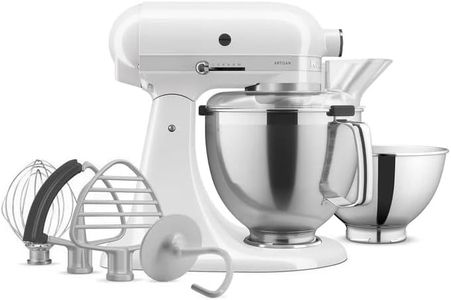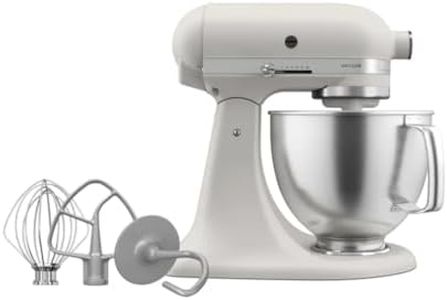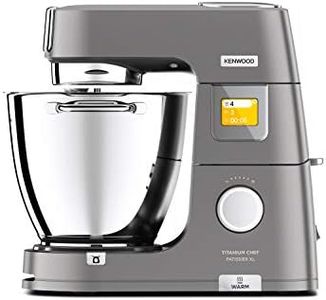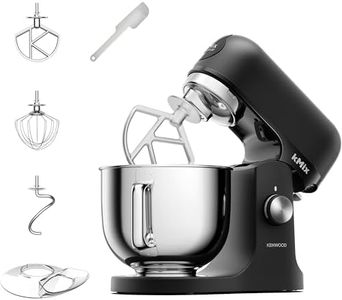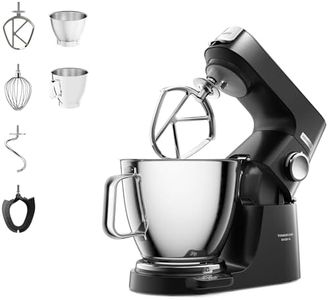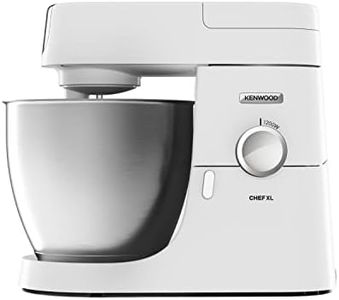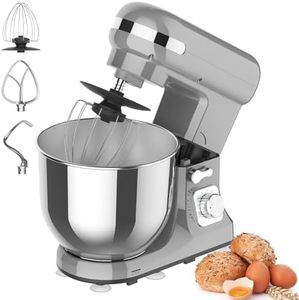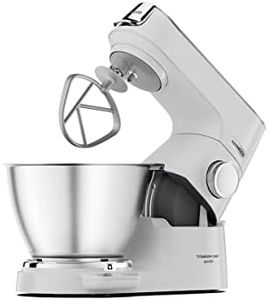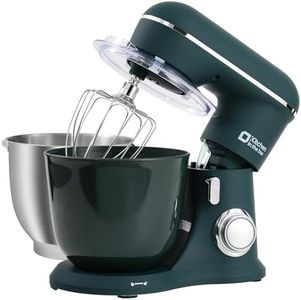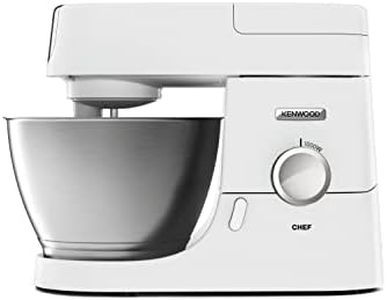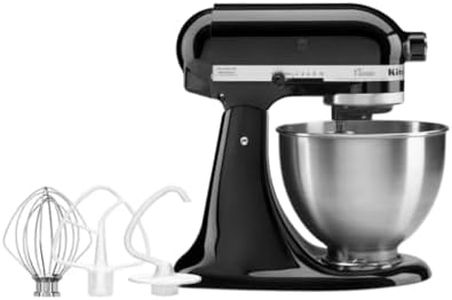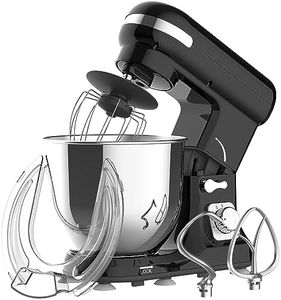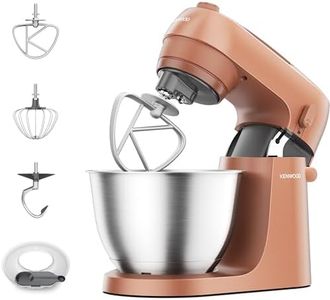We Use CookiesWe use cookies to enhance the security, performance,
functionality and for analytical and promotional activities. By continuing to browse this site you
are agreeing to our privacy policy
10 Best Small Stand Mixer
From leading brands and best sellers available on the web.Buying Guide for the Best Small Stand Mixer
Choosing a small stand mixer is about finding the right balance between usability, power, and size for your kitchen habits. A good mixer should make baking and cooking tasks easier, whether you’re whipping cream, kneading dough, or mixing batter. Start by thinking about the amount of space you have in your kitchen and how often you plan to use the mixer. Also, consider the types of recipes you make most often – this will help determine the features that are most important for your needs.Bowl CapacityBowl capacity refers to how much the mixer bowl can hold, usually measured in liters or quarts. This is important because it determines the amount of ingredients you can mix at once. Smaller mixers typically range from about 2 to 4 quarts; the lower end is suitable for beating a few eggs or making a small cake, while the higher end can handle bread dough or multiple batches of cookies. If you mostly bake small quantities or have limited counter space, a smaller bowl is sufficient; if you want to make larger batches, aim for a bigger bowl.
Motor PowerMotor power, often listed in watts, affects a mixer's ability to handle tough ingredients like bread dough. A stronger motor will mix more efficiently and last longer. Lighter use like making whipped cream or cake batter can be done well with lower motor power (around 200-300 watts), but heavier tasks like kneading dough need more strength (300-500 watts or more). If you plan to do mostly light mixing, a less powerful motor is fine; if you expect to regularly make bread or dense mixes, look for higher power.
Speed SettingsSpeed settings give you control over how fast or slow the mixer runs, and more speeds mean more flexibility for various tasks. Mixers usually have between 3 to 10 speed settings. Lower speeds are great for gentle mixing or adding ingredients without splashing, while higher speeds are needed for whipping cream or beating egg whites. For most home bakers, 5 to 7 speeds offer enough flexibility; think about the types of recipes you make and if you'll need very slow or very fast mixing options.
Attachments IncludedAttachments are the extra tools that come with the mixer, such as a whisk, dough hook, or flat beater. The types and quality of attachments can significantly expand how you use your mixer; more attachments mean you can do more, from beating eggs to kneading dough. Basic mixers usually come with a few attachments suitable for everyday baking. If you want to try different recipes, check what attachments come standard and if more options are available to buy separately.
Size and WeightThe physical size and weight of a mixer impact how easy it is to store and move. Lightweight and compact mixers are easier to store in cabinets or move on and off the counter, which is great for small kitchens or occasional use. Heavier mixers tend to be more stable during use, which is helpful for tasks like kneading dough. Consider how much space you have and whether you’ll leave the mixer on the counter or need to move it frequently.
Ease of CleaningEase of cleaning refers to how simple it is to take apart, wash, and reassemble the mixer and its parts. Mixers with dishwasher-safe attachments and bowls are easier to maintain, saving you time and effort. If you bake often, look for a mixer that’s easy to clean quickly between recipes so you’ll be more likely to use it regularly.
